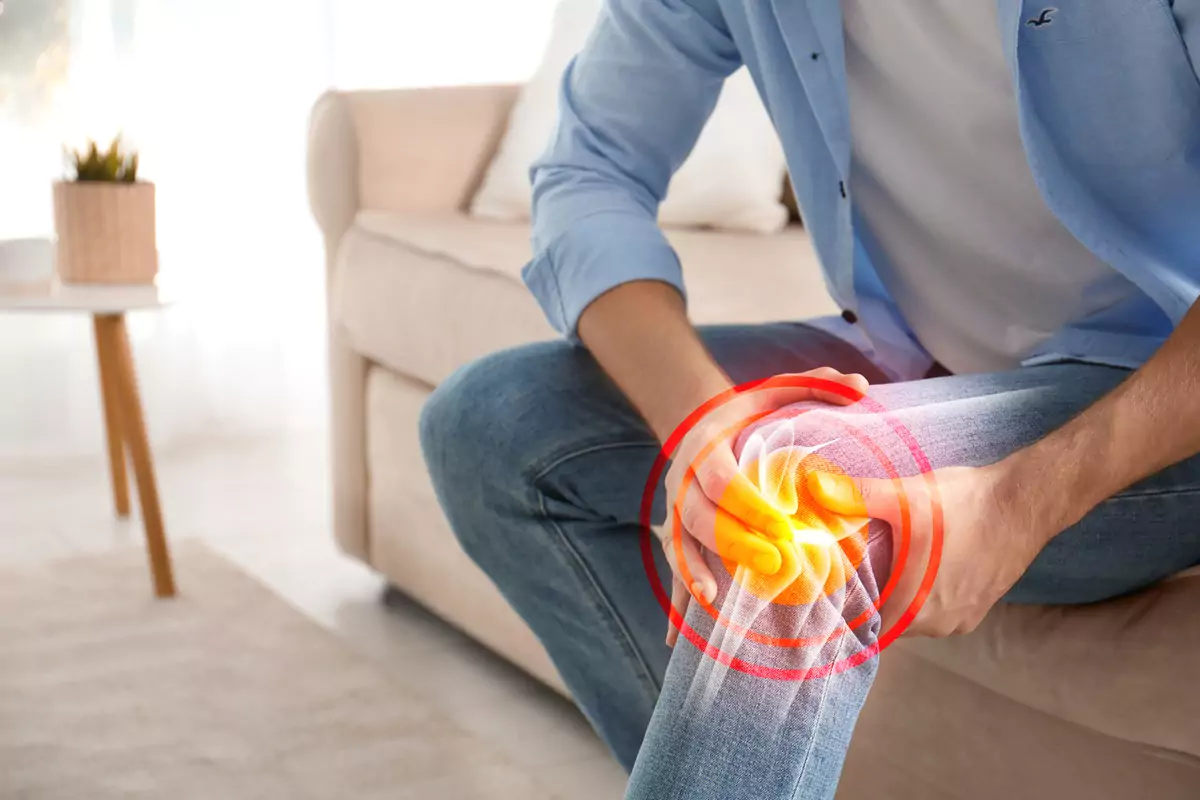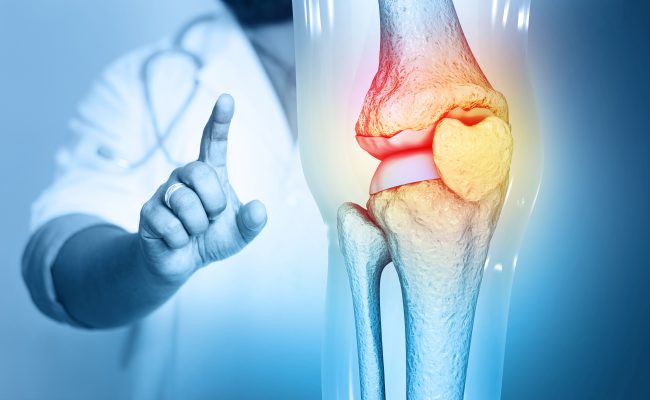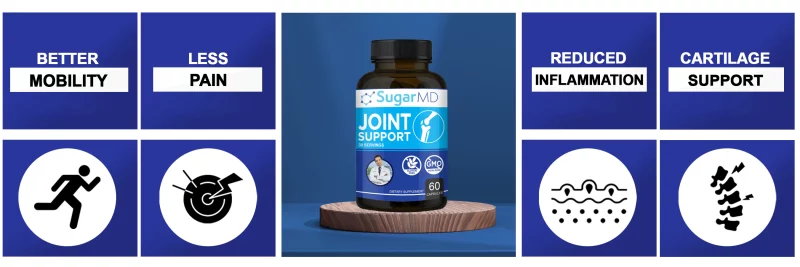





Best Relief for Knee Arthritis: Discover Natural Ways


Table of Contents
- What is Knee Arthritis?
- Understanding Knee Arthritis: Delving into the Symptoms
- Pain: The Foremost Indicator
- The Evolution of Symptoms
- Natural Ways to Alleviate Knee Arthritis Pain
- Weight Management and Its Impact on Knee Arthritis
- Physical Therapy and Regular Exercise
- Proper Footwear and Shoe Inserts: A Step towards Knee Relief
- Dietary Adjustments and Supplements: Nourishing the Joints from Within
- Heat and Cold Therapy for Knee Arthritis
- Massage and Alternative Therapies
- Conclusion
- Frequently Asked Questions
- What causes knee arthritis?
- How is knee arthritis diagnosed?
- Are there any side effects to the treatments mentioned?
- How often should I exercise to alleviate symptoms?
- Can knee arthritis be cured?
- About The Author
Knee arthritis is more than just a medical term; it's a life-altering condition that affects millions globally. The quest for the best relief for knee arthritis is not just about alleviating pain; it's about reclaiming one's life, step by step. In this article, we delve deep into Best Relief for Knee Arthritis, offering hope and practical solutions to those in search.
Whether you're newly diagnosed or have been battling this condition for years there's always something new to learn and try. So, let's embark on this journey together, exploring avenues that promise not just relief, but a chance at a more active and fulfilling life.
What is Knee Arthritis?
Knee arthritis, at its core, is a degenerative condition that affects the knee joint. The primary culprit? The gradual wear and tear of the cartilage. This cartilage serves as a cushion between the bones of the knee, ensuring smooth movement and absorbing shock. When this protective layer starts to break down, it results in the bones rubbing against each other.
This friction is the root cause of the pain, swelling and stiffness that many individuals experience. But what exactly leads to this deterioration? Multiple factors come into play. Age is undeniably a significant factor. As we grow older, our cartilage naturally becomes more susceptible to wear. This is why many seniors find themselves grappling with the symptoms of knee arthritis.
However, age isn't the only factor. Injuries, genetics and even certain occupations that demand repetitive knee movements can accelerate cartilage wear. The symptoms of knee arthritis can range from mild to severe. In the early stages, one might only feel a slight discomfort or occasional stiffness, especially after periods of inactivity or first thing in the morning.
As the condition progresses the pain can become more persistent, often accompanied by a noticeable swelling around the knee. In advanced cases the joint might even produce a grating sound, known as crepitus, during movement. Knee arthritis is more than just an age-related ailment. It's a complex condition with various causes and manifestations.
Recognizing its symptoms early on and understanding its intricacies can pave the way for effective management and treatment. Whether you're an aging individual noticing the first signs or a young adult with risk factors, being informed is the first step to taking control of your knee health.
Understanding Knee Arthritis: Delving into the Symptoms
Knee arthritis, a condition that affects millions worldwide, is characterized by the degeneration of the joint's cartilage. This degeneration leads to a myriad of symptoms that can significantly impact one's quality of life. Let's delve deeper into the common symptoms associated with knee arthritis and understand their implications.
Pain: The Foremost Indicator
One of the primary symptoms of knee arthritis is pain. Initially, this pain is often activity-induced, meaning it intensifies with movements like walking, jogging, or climbing stairs. However, as the condition progresses the pain can become more persistent. It might reach a point where individuals experience discomfort even during periods of rest or minimal activity. This constant pain can be debilitating, making even simple daily tasks challenging.
Swelling: A Telltale Sign
Swelling is another common symptom associated with knee arthritis. The inflammation within the joint can lead to fluid accumulation, causing the knee to appear swollen. This swelling can further restrict movement and add to the discomfort. Regularly monitoring for any signs of swelling can help in early detection and management of the condition.
Stiffness: The Silent Restrictor
Stiffness in the knee joint is a symptom that many arthritis patients report. This stiffness is most pronounced after periods of inactivity, such as waking up in the morning or after sitting for extended durations. It can make it difficult for individuals to initiate movements, leading to a decreased range of motion. Over time, this reduced mobility can affect one's ability to perform routine activities and maintain an active lifestyle.
Decreased Range of Motion: The Subtle Impact
A decreased range of motion is a gradual symptom that might go unnoticed in the initial stages. As the cartilage wears away and the joint space narrows the knee's ability to move freely diminishes. Activities that were once easy, like bending to tie a shoelace or squatting, can become challenging. This reduced range can also affect one's walking pattern, leading to an altered gait.
The Evolution of Symptoms
It's essential to understand that the symptoms of knee arthritis are progressive. What starts as occasional pain or slight stiffness can evolve into constant pain, significant swelling and a severely restricted range of motion. Early detection and intervention can help manage these symptoms and potentially slow the progression of the disease.
Natural Ways to Alleviate Knee Arthritis Pain
Weight Management and Its Impact on Knee Arthritis
The relationship between body weight and joint health is undeniable. The strain our joints, particularly the knees, endure is directly influenced by our body weight. It's a simple equation: the more you weigh the more pressure you put on your knees.
In fact, being just 10 pounds overweight can increase the force on the knee by 30-60 pounds with each step. This added pressure can accelerate the wear and tear on the knee's cartilage, leading to osteoarthritis, a common joint disorder.
Osteoarthritis, often referred to as wear-and-tear arthritis, is a condition where the protective cartilage that cushions the ends of your bones wears down over time. The knee is one of the most commonly affected joints. With the prevalence of obesity on the rise the number of people suffering from knee osteoarthritis is increasing.
Studies have shown that overweight individuals have up to 5 times greater risk of developing knee osteoarthritis compared to those with a healthy weight. But there's good news. Weight management can play a pivotal role in alleviating the symptoms of knee osteoarthritis. Even modest weight loss can lead to significant improvements.
Losing just 5% of body weight can reduce knee pain, improve mobility and slow the progression of osteoarthritis. Furthermore, weight loss can lead to other health benefits such as decreased blood pressure, improved cholesterol levels and better blood sugar control.
SugarMD Weight Loss Formula
In the journey of weight management, while regular exercise and a balanced diet play pivotal roles, sometimes, an extra boost is needed to overcome plateaus and achieve desired results. Enter the SugarMD Weight Loss Formula, a game-changer in the world of weight loss supplements.
The SugarMD Weight Loss Formula isn't just another weight loss supplement; it's a meticulously crafted formula designed to target the most stubborn body fat. What makes it stand out is its ability to accelerate the metabolism. A faster metabolism means your body can burn calories at an increased rate, even when you're at rest. This not only aids in shedding those unwanted pounds but does so in a manner that's both quick and safe.But the benefits don't stop at fat burning.

One of the challenges many face when trying to lose weight is the constant battle with hunger pangs and cravings. This formula addresses that challenge head-on by acting as an appetite suppressant. By curbing unnecessary hunger, it ensures that you consume fewer calories, making the weight loss journey smoother. Moreover, weight loss isn't just about looking good; it's about feeling good too.
The SugarMD Weight Loss Formula understands this holistic approach. Its blend of natural ingredients doesn't just focus on weight loss; it also works to increase your energy levels. With higher energy, you're more likely to stay active, further complementing your weight loss efforts.
Physical Therapy and Regular Exercise
While weight management is crucial, it's just one piece of the puzzle. Physical therapy and regular exercise are equally vital in managing and preventing knee arthritis. Physical therapy, tailored to an individual's needs, can help increase the strength of the muscles supporting the knee, enhance flexibility and reduce pain.
A licensed therapist can guide patients through specific exercises that target the knee and surrounding muscles, ensuring they are done correctly and effectively. Regular exercise, on the other hand, is essential for overall joint health. Engaging in low-impact activities such as swimming, cycling and walking can be particularly beneficial for those with knee arthritis. These exercises strengthen the muscles around the knee, providing better support and reducing strain.
Additionally they help lubricate the joints which can decrease pain and improve mobility. Water-based exercises, like aqua aerobics or swimming, are especially beneficial. The buoyancy of the water reduces the impact on the joints, allowing for a more comfortable workout.
Plus the resistance of the water helps strengthen muscles without putting undue stress on the knee. Incorporating a mix of aerobic exercises, strength training and flexibility exercises is the key to optimal knee health. But remember, it's essential to listen to your body. If an activity causes pain, it's crucial to stop and consult a healthcare professional.

Proper Footwear and Shoe Inserts: A Step towards Knee Relief
The importance of proper footwear cannot be overstated, especially when dealing with knee arthritis. The shoes we wear play a pivotal role in our overall posture and the way our body weight is distributed. For those with knee arthritis the right footwear can be the difference between a day of comfort and a day of pain.
Why Footwear Matters
Every step we take sends a shockwave through our body, starting from our feet and traveling up through our knees, hips and spine. Shoes that don't provide adequate support can amplify this shock, leading to increased stress on the knees. Over time, this can exacerbate the symptoms of arthritis, causing more pain and discomfort.
For those with knee arthritis, it's crucial to choose shoes with a sturdy sole and adequate cushioning. This not only absorbs the shock of each step but also ensures that the foot is properly aligned, reducing strain on the knee joint.
The Role of Shoe Inserts
While good footwear is a start, some individuals might require additional support. This is where shoe inserts, also known as orthotics, come into play. These are custom-made insoles designed to fit inside your shoes, providing extra support and cushioning. Orthotics are tailored to the individual's foot structure and walking pattern.
They work by redistributing weight, correcting foot imbalances and improving foot function. For someone with knee arthritis, this can mean reduced pressure on the knee joint, leading to less pain and better mobility.
Dietary Adjustments and Supplements: Nourishing the Joints from Within
The saying "you are what you eat" holds particular significance for those with knee arthritis. Our diet can influence inflammation levels in the body which in turn can impact arthritis symptoms.
Anti-Inflammatory Foods
Certain foods are known for their anti-inflammatory properties. Incorporating these into your diet can help manage and reduce arthritis symptoms:
- Fish: Especially fatty fish like salmon, mackerel and sardines, are rich in omega-3 fatty acids. These compounds have been shown to reduce inflammation and alleviate arthritis symptoms.
- Nuts: Almonds, walnuts and other nuts are packed with antioxidants that can help combat inflammation.
- Whole Grains: Foods like brown rice, quinoa and whole grain bread can help lower levels of C-reactive protein, a marker of inflammation in the body.
On the flip side, it's essential to reduce the intake of processed foods. These often contain unhealthy fats, sugars and additives that can increase inflammation.
The Power of SugarMD’s Joint Support
While a balanced diet is crucial, supplements can provide an added boost. One such supplement is SugarMD’s Joint Support. This powerful blend combines the benefits of organic turmeric, boswell serrata, quercetin, bromelain and l-methionine.

- Organic Turmeric: A potent anti-inflammatory agent, turmeric can help reduce pain and swelling in the joints.
- Boswell Serrata: Known for its anti-arthritic properties, this ingredient can provide relief from joint discomfort.
- Quercetin: This natural anti-allergen can reduce inflammation caused by allergies, strengthening the immune response.
- Bromelain: Found in pineapples, bromelain can reduce swelling and improve joint mobility.
- L-Methionine: An essential amino acid that plays a role in strengthening bone density.
Incorporating this supplement into your daily routine can provide the joints with the nourishment they need, promoting health and reducing discomfort.
Heat and Cold Therapy for Knee Arthritis
Knee arthritis can be a debilitating condition, causing pain, stiffness and reduced mobility. While there are various treatments available, one of the most straightforward and effective solutions is the use of heat and cold therapy. But how do these therapies work and when should you use each one?
Heat Therapy: Soothing the Pain Away
Heat therapy, also known as thermotherapy, involves applying warmth to the affected area. The heat increases blood flow which can help deliver essential nutrients and oxygen to the joint. This enhanced circulation can aid in the repair of damaged tissues and can help relax and soothe muscles surrounding the knee, alleviating stiffness. There are several ways to apply heat:
- Heating Pads: These are electrically heated devices that can be placed directly on the skin. Always use a cloth or towel between the pad and the skin to prevent burns.
- Warm Compresses: Soak a cloth in warm water, wring out the excess and then place it on the knee.
- Hot Water Bottles: Fill a bottle with hot water and wrap it in a towel before placing it on the affected area.
- Warm Baths or Showers: Immersing the knee in warm water can provide widespread relief.
Heat therapy is especially beneficial for those mornings when the joints feel particularly stiff or after a day of extended activity. However, it's essential to avoid using heat on a joint that's already hot, red and irritated.
Cold Therapy: Reducing Inflammation and Swelling
It is the application of cold to the affected area. Cold can reduce blood flow which in turn minimizes inflammation, swelling and pain. Cold therapy is particularly effective within the first 24 hours of a pain flare-up or after activities that strain the knee, like exercising or gardening. Methods of applying cold include:
- Ice Packs: Commercially available or homemade these can be applied directly to the knee. Again, use a cloth or towel as a barrier to prevent frostbite.
- Cold Compresses: Soak a cloth in cold water, wring out the excess and apply.
- Frozen Vegetables: In a pinch, a bag of frozen peas or corn can act as an improvised ice pack.
When using cold therapy, it's crucial to apply the cold for 20 minutes then take a 20-minute break before reapplying.
Massage and Alternative Therapies
Beyond heat and cold, massage therapy can offer additional relief. Regular massages can improve circulation, reduce pain and increase the range of motion in the knee. The kneading and pressure applied during a massage can help flush out toxins, relax muscles and reduce tension in the knee area. Alternative therapies, such as acupuncture, have also gained popularity.
Acupuncture involves inserting thin needles into specific points on the body. This can stimulate blood flow and release endorphins the body's natural painkillers. Many individuals with knee arthritis have found relief through regular acupuncture sessions.
Conclusion
Living with knee arthritis can be a challenging journey, often marked by pain, discomfort and limitations in daily activities. This condition which results from the wear and tear of the knee joint, can significantly impact one's quality of life. However, it's essential to remember that while the journey might be tough, it's not insurmountable.
With the right strategies and a proactive approach, managing the symptoms and leading a fulfilling life is entirely within reach. The realm of treatments for knee arthritis is vast, ranging from natural remedies to advanced medical interventions.
Natural methods, such as weight management, physical therapy and dietary adjustments, can play a pivotal role in alleviating pain and improving joint function. For instance, maintaining an optimal weight reduces the strain on the knees, while certain foods with anti-inflammatory properties can combat the inflammation that exacerbates arthritis symptoms.
On the other hand, medical treatments, including over-the-counter medications and injections, offer another avenue for relief. These treatments, especially when combined with natural remedies, can provide a comprehensive approach to managing knee arthritis. However, it's crucial to approach any treatment with caution and awareness.
Before diving into a new regimen or making significant changes to your current one, always consult with a healthcare professional. They can provide insights tailored to your specific condition, ensuring that the chosen strategy is both safe and effective.
Frequently Asked Questions
What causes knee arthritis?
Knee arthritis is primarily caused by the wear and tear of the knee joint over time. Factors like age, genetics, previous injuries and excessive weight can contribute to its onset.
How is knee arthritis diagnosed?
Diagnosis typically involves a combination of physical examinations, medical history discussions and imaging tests like X-rays or MRIs to assess the extent of joint damage.
Are there any side effects to the treatments mentioned?
While many treatments are generally safe, some, especially medications, can have side effects. It's essential to discuss potential risks with a healthcare provider.
How often should I exercise to alleviate symptoms?
Regular exercise, tailored to your condition and comfort level, can be beneficial. A physical therapist can provide guidance on frequency and type of exercises.
Can knee arthritis be cured?
While there's no definitive cure for knee arthritis the condition's symptoms can be managed effectively, allowing individuals to maintain an active and fulfilling life.
About The Author
Meet Dr. Ahmet Ergin a highly skilled and dedicated endocrinologist with a passion for diabetes care. Dr. Ergin earned his medical degree with honors from Marmara University in Istanbul. He completed internal medicine residency and endocrinology fellowship at Cleveland Clinic.
Dr. Ergin is board-certified in Internal Medicine, Endocrinology, Diabetes and Metabolism due to his vast medical expertise. He's a certified diabetes educator, author of "The Ultimate Diabetes Book," and founder of "the SugarMD YouTube channel."
Dr. Ergin offers exceptional diabetes care to his patients in Port Saint Lucie, FL, helping them manage effectively. Disclaimer: These statements have not been evaluated by the Food and Drug Administration. Information on this website isn’t intended to treat, cure or prevent any disease. Discuss with your doctor and do not self-treat.
Written By Dr. Ahmet Ergin
461 total articles
Meet Dr. Ahmet Ergin, a highly skilled and dedicated endocrinologist with a passion for diabetes care. Dr. Ergin earned his medical degree with honors from Marmara University in Istanbul. He completed internal medicine residency and endocrinology fellowship at Cleveland Clinic. Dr. Ergin is board-certified in Internal Medicine, Endocrinology, Diabetes, and Metabolism due to his vast medical expertise. He's a certified diabetes educator, author of “The Ultimate Diabetes Book,” and founder of “the SugarMD YouTube channel.” Dr. Ergin offers exceptional diabetes care to his patients in Port Saint Lucie, FL, helping them manage effectively. For a closer look into his insights and experiences, connect with Dr. Ahmet Ergin on LinkedIn, Instagram, and YouTube.”
Disclaimer: These statements have not been evaluated by the Food and Drug Administration. Information on this website isn't intended to treat, cure or prevent any disease. Discuss with your doctor and do not self-treat.
Products





